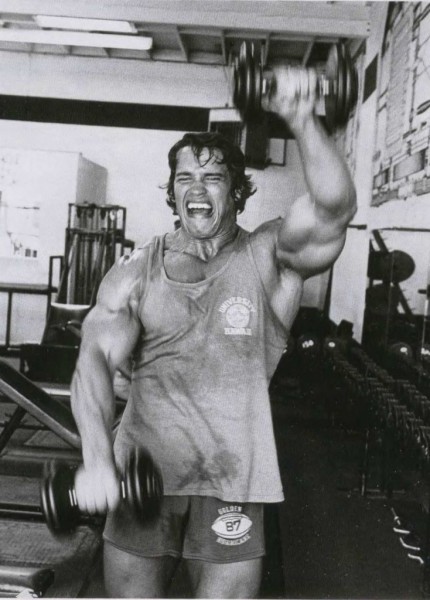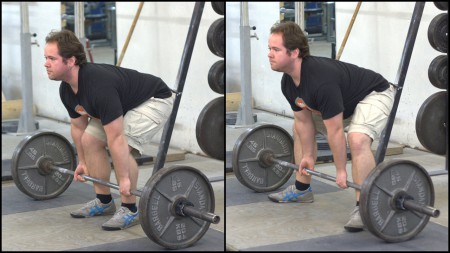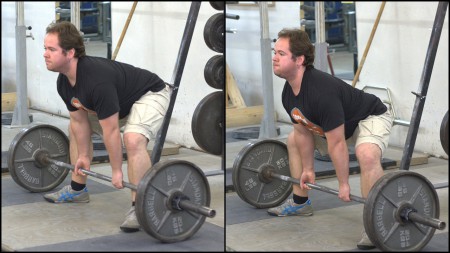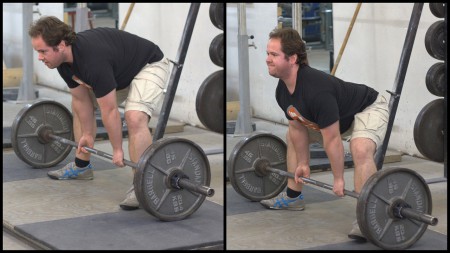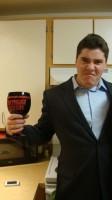I asked Mark Marotta to write a post that we could use as a reference for lifters interested in getting involved in their first powerlifting competition. I’m extremely pleased with what he put together. Ask any relevant questions below. – Jacob
One characteristic (read: problem) that distinguishes powerlifting, as a sport, from most other sports, is that there is no individual federation that is the one recognizable organization for the sport (think IWF for weightlifting, NFL for football, etc). In powerlifting there are multiple organizations that are all of comparable size and name recognition. For those interested in competing, I’m going to use this article to outline the differences between some of them so when you do decide to compete, you can pick which federation is right for you.
The most recognizable/largest federations in powerlifting, in no particular order, are the International Powerlifting Federation, The World Powerlifting Congress, and 100% RAW Powerlifting. Of course there are other, smaller federations, but they won’t be as likely to have meets in your area, and if, by chance they are the closest meet, this article will tell you all the things you need to look for in the rule book (you should read the whole thing anyways, but there are certain things to make sure you look for).
This article will, of course, only cover the raw sections of the aforementioned federations, as this site has never claimed to have enough knowledge of equipped lifting to write any advice on the subject.
1. WEIGH IN
Seeing as it’s the first thing you’ll do, it’s the first thing I’ll cover. Different federations have different “weigh in” periods, as well as different classes to weigh into. If it’s your first meet, this does not matter. Weigh yourself when you fill out your registration, pick the weight class you fit into at this time, then whatever class you weigh into at the meet, it doesn’t matter. For any meets after this, though, The weight classes are as follows:
IPF:
Men: 58kg, 66kg, 74kg, 83kg, 93kg, 105kg, 120kg, 120+kg
Women: 47kg, 52kg, 57kg, 63kg, 72kg, 84kg, 84+kg
(Editor’s Note: The USAPL, the US arm of the IPF, uses slightly different classes, which I will update here)
100% RAW:
Men: 48kg, 52kg, 56kg, 60kg, 67.5kg, 75kg, 82.5kg, 90kg, 100kg, 110kg, 125kg, 140kg, 140+kg
Women:44kg, 48kg, 52kg, 56kg, 60kg, 67.5kg, 75kg, 82.5kg, 90kg, 90+kg
WPC:
Men: 52kg, 56kg, 60kg, 67.5kg, 75kg, 82.5kg, 90kg, 100kg, 110kg, 125kg, 140kg, 140+kg
Women:44kg, 48kg, 52kg, 56kg, 60kg, 67.5kg, 75kg, 82.5kg, 90kg, 90+kg
As for weigh-in periods, the IPF has a 2 hour weigh in time, meaning no one can weigh in any more than 2 hours before the meet (or your section of it) commences (Note: Some USAPL meets will choose to hold a longer weigh-in period for NON record-setting lifters). WPC has a 24 hour weigh in, which typically means there will be multiple weigh in periods scattered across the 24 hours preceding the section (for example, 3 separate 2 hour periods to weigh in – one starting 24 hours out, one 12 hours out, and one 2 hours out). 100% RAW meets have 18 hour weigh ins with one period the evening preceding meet day and one period the morning of. There are plenty of arguments of whether or not 24 hour weigh ins are cool, but for your first meet it doesn’t really matter as long as you know when and where your weigh in is. If you don’t weigh in, you don’t lift, so just make sure you get that information and write it down on your check list for the meet (Make a checklist of things you need to have and places you need to be well in advance).
2. EQUIPMENT
Pretty much any federation you lift in, you’re going to need a one piece, one ply singlet with either the manufacturer’s logo or without one at all, a one piece, one ply t-shirt with the sleeves ending above your elbows and below your delts that is either plain or has a design that is “not offensive.” Allowance on designs isn’t going to vary federation to federation so much as it will meet to meet, so just bring a plain t-shirt. You’ll also need socks that go up to your knees for deadlifts, to the same specs as your shirt. You also can’t wear assistive underwear, they don’t usually check, but just wear normal underwear. (Note: For the love of Glob, wear whitey-tighties or a jock strap. Anything else is asking for trouble from bored judges. Females should avoid underwire bras or panties with an inseam).
2.1 Knee Sleeves:
IPF: Commercial knee sleeves as designed for medical/surgical or sports use and constructed of neoprene (no other form of rubber or similar material is acceptable) with an optional covering of cotton, polyester or medical crepe may be worn. Alternatively an elasticised traditional kneecap supporter may be worn. A combination of the two is forbidden.(Note: The IPF has a list of approved knee sleeves, will update soon)
(a) Knee sleeves must be “slip on” and not contain any form of tightening e.g. straps/draw strings/velcro tabs and the likes. Read: No Inzer Wraps.
(b) Maximum length 30 cm’s, maximum thickness 7 mm’s.
(c) Must not extend more than 15 cm’s above or 15 cm’s below the center of the knee joint.
(d) Shall not be in contact with socks or lifting suit.
100% RAW, WPC: No knee sleeves are allowed in the raw division.
2.2 Wrist Wraps:
IPF: Select from the list of approved wraps on the IPF site. Once worn, the wrap cannot be more than 10cm above, or 2cm below the center of the wrist joint, with the total wrap not exceeding 12cm.
WPC: Up to 1m in length, 8cm in width – if they have a thumb loop you cannot use it. The wrap cannot be more than 10cm above, or 2.5cm below the center of the wrist joint, with the total wrap not exceeding 12cm.
100% RAW: Up to 61cm in length, 8cm in width, if they have a thumb loop you cannot use it, with the total wrap not exceeding 12cm.
2.3 Shoes
IPF: Sports shoes, sports boots, Weightlifting shoes, Power lifting boots, or Dead lift slippers must be worn. The bottom must be flat (no projections, irregularities, or a doctoring from the standard design and no part of the underside higher than 5 cm’s). If there are loose inner soles they may not be thicker than 1cm.
WPC: Footwear more substantial than basic socks must be worn. The only restrictions to such footwear is that no metal cleats or spikes are permitted.
100% RAW: Same regulations as the IPF, with the limitation that the bottom of the shoe cannot be taller than 5cm at any point.
2.4 Belt
All of the federations have long winded explanations that are different hashings of the same thing. If you have a regular prong/lever belt, less than 10cm tall, and less than 13mm thick, with no logo or text on it other than your name, or a lifting club you’re affiliated with. With the additional limitations from IPF of:
Inside width of buckle: maximum 11 cm’s.
Outside width of buckle: maximum 13 cm’s.
Tongue loop: maximum width 5 cm’s.
Distance between end of belt and far end of tongue loop: maximum 25 cm’s.
3. THE LIFTS
3.1 SQUAT
All three of the federations follow the same set of standards for the squat, with the same commands. The crease of the hip must go below the top of the knee, the feet cannot move once the lift has commenced, you cannot double bounce, etc. The rule books of the federations are nearly word-for-word identical. The only difference is that the WPC allows lifters to squat out of a monolift (you can walk it out if you want) whereas IPF and 100% Raw use squat stands or racks.
3.2 BENCH PRESS
IPF: Commands for beginning the descent of the bar, pressing once the bar has touched the chest and become motionless, and one to rack when the bar is locked out. Suicide grip and underhand grip are not allowed. During the lift the feet must be flat on the ground.
WPC: Commands for pressing once the bar is motionless on the chest, and for racking when the bar is locked out. Suicide grip and underhand grip are both allowed. At minimum the toes must be in contact with the ground, but the feet can be placed flat on the ground if desired.
100% RAW: Commands for pressing once the bar is motionless on the chest, and for racking when the bar is locked out. Suicide grip is allowed, underhand grip is not. The feet must be flat on the ground for the duration of the lift.
The rest of the rules for the lift are consistent between the federations. The distance between the lifters hands cannot exceed 81cm, your feet cannot be in contact with the bench or it’s supports, and the bar can not be raised with an excessive tilt, or an oscillation.
3.3 DEADLIFT
The rules for the deadlift are entirely consistent between the three federations. Your feet can’t move once you start lifting, you can’t hitch, you have to control the descent of the bar, and all the standard rules for doing a deadlift. The only command is for descent, once the bar is locked out.
4. MISC.
Another difference between the federations that should be taken note of is the attempt protocol. When the attempts are put in for IPF and WPC competitions, the lifter or the handler/coach needs to sign for it. In 100% RAW, you just need to tell the officials the weight. Having competed in both WPC and IPF meets I’m gonna go ahead and say that for a beginner WPC is a lot friendlier of an environment. It’s a lot more of a relaxed setting (which has it’s pros and cons) from what I’ve seen 100% RAW is a lot more similar to WPC in that respect.
For further reference, read the rule books linked below (before you do a meet in a new fed read the entire rule book. Just fucking do it.) The record books for the feds are linked below as well.
IPF:
Rules
Records
(The American records are linked because the formatting of the world record’s on IPF’s site is completely abhorrent)
WPC:
Rules
(Word document download link)
Records
100% RAW:
Rules
Records
Now get out there and compete, dammit!

